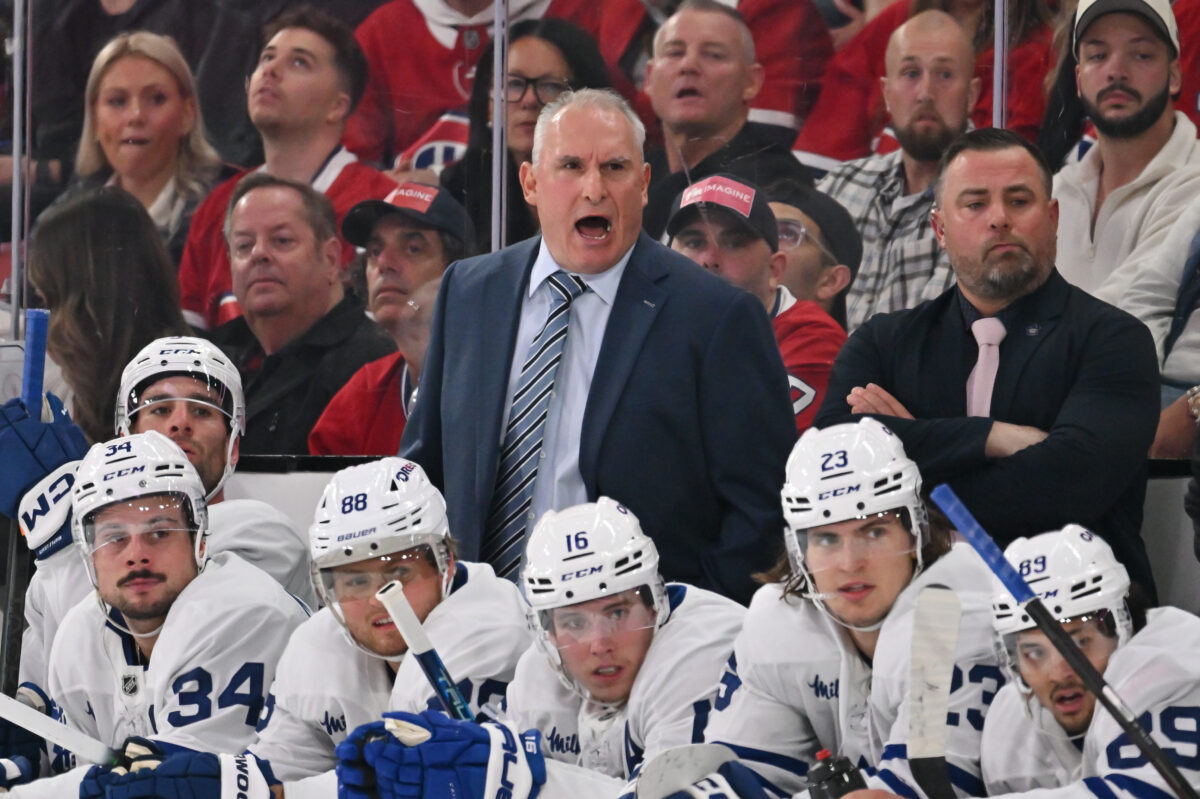With just the preseason and two regular season games in the books, it seems clear that the Toronto Maple Leafs are approaching injuries differently under head coach Craig Berube. Either the team is dealing with an unusual number of injuries this season, or Berube is taking a more cautious approach to managing player health.
Related: Maple Leafs’ Dennis Hildeby Earns First NHL Win
Under former coach Sheldon Keefe, it wasn’t uncommon to hear about players pushing through injuries. Players often seemed to be dealing with various issues while still suiting up. That suggested a tolerance for playing hurt as long as they could perform reasonably. However, Berube’s early days behind the bench indicate that the same strategy might no longer be accurate.
Berube Seems to Have Shifted His Philosophy of Injury Management
There are already notable differences between Berube and his predecessor. Berube, who has a reputation for demanding a more physical style of play from his teams, appears to be fostering a more demanding, grittier culture on the ice. Practices under Berube are reportedly harder, faster, and more physical than those under Keefe.
Last season, Keefe’s practices were lighter, with music playing and a more relaxed atmosphere. This season, the music has been cut, and the tone of the team’s training has become much more weighty and intense.

It’s no surprise that injuries seem to be happening more frequently, even during practice sessions. While last season, most practice injuries seemed accidental—players being hit by pucks or falling awkwardly—this season, the sheer intensity of the practices might be contributing to more bumps and bruises. Players are being pushed harder physically, which could lead to more wear and tear.
Berube Seems to Be Protecting Players for the Long Haul
What stands out most is how Berube handles these injuries. So far, when he talks about players missing time due to injury, he often downplays the severity, calling them “minor” issues. Yet, despite the seemingly minor nature of these injuries, players are missing games. This suggests that he might take a more conservative approach to player health. Instead of letting players push through nagging injuries, he appears more willing to sit them out to prevent further damage.
This makes sense in the context of Berube’s coaching style. He expects his players to play a physical grinding game, and players who are nursing even minor injuries might not be able to play with the level of aggression he demands. Not only could they risk worsening their injuries, but they also might not be able to execute Berube’s game plan fully.
Is There a Cost to Berube’s Push for Increased Physicality?
Berube’s system’s increased physical demands might put players at higher risk of injury. Playing a tougher, more physical style naturally leads to more bumps and bruises; more intense practices could also contribute to this. With the season just beginning, it remains to be seen whether this trend will continue or if the team will adjust as the schedule grind sets in.
Related: Maple Leafs’ Goaltending Future Might Just Be Dennis Hildeby
Could this shift affect the Maple Leafs’ performance throughout the season? On the one hand, resting players who are less than 100% might keep them healthier in the long run, allowing them to be more effective when they do play. On the other hand, a more physical style combined with frequent injuries could lead to a rotating lineup and disrupt team chemistry.
What’s Next for the Maple Leafs?
As the season progresses, it will be interesting to see how Berube’s approach to injuries evolves. Will this cautious management of player health pay off later in the season? Will it keep players fresher for a potential playoff run? Or will the increased physicality of Berube’s system lead to more long-term injury concerns?
For now, it appears that Berube is balancing his desire for a tough, aggressive team with the need to protect players from unnecessary risk. Whether this strategy will benefit the team remains to be seen, but it’s clear that the Maple Leafs’ approach to dealing with injuries has already undergone a significant change under their new head coach.
[Note: I want to thank long-time Maple Leafs fan Stan Smith for collaborating with me on this post. Stan’s Facebook profile can be found here.]
